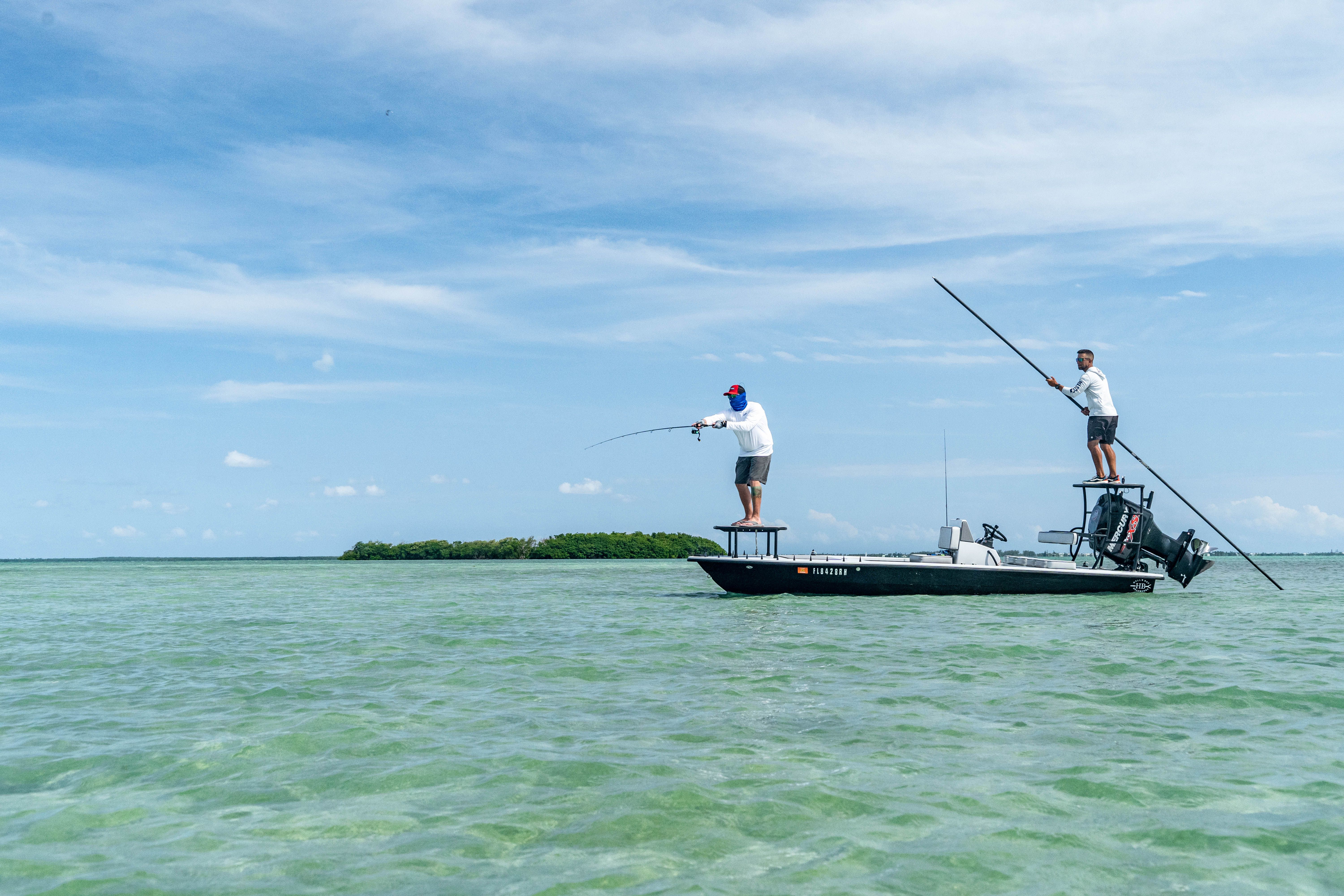FLORIDA FLATS BONANZA

Spring in Florida ignites the coastal shallows, as rapidly warming waters spur inshore predators along their seasonal patterns. Sunshine State winters are relatively mild, but the cold season definitely slows metabolisms. Once spring is fully under way, the rod-bending potential explodes.
Snook, in particular, will be feeding heavily in preparation for their forthcoming summer spawn. By late June, the mature linesiders will make their way toward the coastal passes and less-trafficked beaches, where they’ll gather for reproductive plans during the stronger tides of new and full moons.
Until that time, snook join redfish and speckled trout in chasing the growing pods of baitfish. The main species are scaled sardines (aka “whitebait” or “pilchards”) and threadfin herring (aka “greenbacks”), both of which play a huge role in the coastal food web.
You’ll find inshore gamefish hunting baitfish in a variety of scenarios including:
Grass flats — Swaying blades of eel grass and the wispy manatee grass host daily parades of silver shards that move with the tides. Proximity to channels and deeper cutsincreases bait frequency.
Mangrove Islands — Tiny keys and larger masses dotting the coastal zone offer overhanging cover, tidal troughs and current-worn holes off their ends. All are `natural gathering areas and travel lanes for bait schools and the predators that seek them.
Bridges, Piers and Docks — Shady cover plus current breaks give these structures magnetic appeal.
Free lining or floating live bait definitely produces tremendous spring action, but these tactics require a significant amount of time and effort for baitfish capture and management. Artificial baits streamline the fishing operation by eliminating the requisite cast net time and offer a viable alternative — especially when you’re slinging the ones that look just like the real deal.
Ideal for this role is the highly convincing LIVETARGET Sardine Swimbait. Easily cast and worked in a straight retrieve or a twitching, dashing style, this sturdy bait will stand up to multiple catches — a clear advantage over livies. (For a different look, alternate a few casts with the LIVETARGET Pinfish Swimbait.)
The standard flats fare — a 7- to 7-6 medium heavy spinning outfit — launches these baits well, but if you’re handy with a baitcaster, you’ll find the efficiency allows you to make more casts in a day’s duration. Either way, you’ll want to make sure you’re properly equipped for long casts and big-fish battles, so spool with 30- to 50-pound TUFLINE 4ORCE braid and add 3 feet of 30-pound TUFLINE XD fluorocarbon leader.
Along with the inshore big-3, spring brings occasional encounters with cobia, bluefish and Spanish mackerel — all sharing a taste for pilchards and threadfin. When the toothy blues and macks crash the party, you’ll loose every bait on a straight fluoro leader, so add about 4-6 inches of wire.
Keep the same braid-to-fluoro setup, but add a small swivel and use a haywire twist, finished with barrel wraps to add the wire. The same connection attaches your swimbait and leaves sufficient range of motion to maximize the appeal.